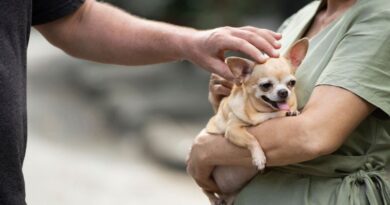Male vs. Female Rottweiler – Rottweilers, known for their strength, loyalty, and versatility, are a popular choice among dog enthusiasts. When considering these robust canines as potential companions, understanding the distinctions between male and female Rottweilers is crucial.
In this comparison, we delve into ten key differences that encompass aspects ranging from size and temperament to health considerations and lifespan. By exploring these variations, prospective owners can make informed decisions based on their preferences and lifestyle, ensuring a harmonious bond with their Rottweiler companion.
Whether one seeks a protective guardian, a family-friendly pet, or a loyal working partner, comprehending the unique characteristics of male and female Rottweilers is paramount for a fulfilling and enduring relationship.
Male vs. Female Rottweiler
Size

Male Rottweilers are generally larger, weighing 95-135 pounds and standing 24-27 inches tall, while females are smaller, weighing 80-100 pounds and standing 22-25 inches tall. Males may display more assertiveness and take longer to mature emotionally. They might be more territorial and prone to marking.
Females, generally more nurturing, might be easier to train and exhibit less aggressive behavior. Both genders require proper training, socialization, and exercise for a balanced temperament.
Health considerations include managing heat cycles in females and potential benefits of early spaying. Individual personalities vary, and responsible breeding and care play crucial roles in a Rottweiler’s behavior.
Also, Read – Spunky Personalities of Yorkshire Terriers
Height
Male Rottweilers typically stand 24-27 inches at the shoulder, while females range from 22-25 inches. Males are generally taller, with a more robust build, weighing 95-135 pounds compared to females, who typically weigh 80-100 pounds.
These size differences contribute to distinct physical appearances between genders. It’s important to note that individual dogs may deviate from these generalizations, and factors such as genetics, nutrition, and overall health influence a Rottweiler’s size.
Regardless of gender, both males and females benefit from proper training, socialization, and regular exercise for a well-balanced and healthy lifestyle.
Temperament
Male and female Rottweilers differ in temperament. Males may exhibit more assertiveness and take longer to mature emotionally, while females are often more nurturing. Though both genders can be protective, males may display stronger territorial instincts and potential aggression towards perceived threats.
Females may be easier to train, showing attentiveness and eagerness to please. However, individual personalities vary, and proper training and socialization are crucial for a well-behaved dog.
Responsible breeding and attentive care play essential roles in shaping a Rottweiler’s temperament, emphasizing the importance of understanding and meeting the unique needs of each dog, irrespective of gender.
Dominance
Male Rottweilers often exhibit more dominant behavior compared to females. While both genders can establish social hierarchies, males may display a greater inclination towards asserting dominance.
Early training and socialization are essential to manage potential dominance-related issues effectively. Neutering can also play a role in reducing dominant behaviors. It’s crucial for owners to establish themselves as leaders through consistent and positive reinforcement training methods.
However, individual temperament varies, and factors such as genetics and environment contribute to a Rottweiler’s behavior. Responsible ownership, proper training, and a supportive environment are key in ensuring a balanced and well-behaved dog, regardless of gender.
Aggression

Male Rottweilers may show a higher tendency toward aggression than females, particularly in response to perceived threats. While both genders are protective, early socialization and training are vital to manage and mitigate aggressive behaviors.
Responsible ownership involves providing a secure environment and positive reinforcement techniques. Neutering may contribute to reducing aggressive tendencies in males. It’s important to note that aggression can be influenced by various factors, including genetics, training, and socialization.
Every dog is an individual, and proper care, consistent training, and a supportive environment play pivotal roles in shaping a Rottweiler’s behavior, fostering a well-adjusted and non-aggressive temperament regardless of gender.
Also, Read – Thoughtful Pit Bull Memorial Ideas
Territorial Behavior
Male Rottweilers tend to display more territorial behavior than females. This may include marking and a heightened sense of protectiveness. Proper training, socialization, and positive reinforcement are crucial to manage territorial instincts effectively.
Neutering can also play a role in reducing marking behaviors. Owners should establish boundaries early on and provide consistent guidance. Despite general tendencies, individual variation exists, and environmental factors influence a Rottweiler’s territorial behavior.
Responsible ownership involves creating a secure environment, understanding a dog’s needs, and addressing any behavioral issues promptly. By fostering a positive and controlled atmosphere, owners can help their Rottweilers develop balanced territorial behaviors, regardless of gender.
Maturity
Male Rottweilers generally take longer to mature emotionally compared to females. While females tend to reach emotional maturity earlier, males may exhibit a more prolonged puppy-like attitude.
This difference in maturity can influence behavior, with owners of male Rottweilers often noting a playful demeanor lasting into adulthood. However, individual variations exist, and proper training, consistency, and socialization play pivotal roles in shaping a well-behaved and mature dog.
Regardless of gender, providing a stable environment, positive reinforcement, and meeting a Rottweiler’s physical and mental needs contribute to a balanced and mature temperament over time.
Energy Levels
Male Rottweilers generally exhibit higher energy levels compared to females. This heightened energy can translate to increased playfulness and activity. Regular exercise is crucial for both genders, but owners of male Rottweilers may find that additional activities are needed to fulfill their energetic requirements.
Adequate mental stimulation is also essential to prevent boredom-related behaviors. While individual variations exist, a commitment to daily exercise routines, interactive play, and mental challenges helps channel the energy of Rottweilers, ensuring they remain healthy and well-behaved.
Owners should tailor their approach based on the unique energy levels of their dogs, regardless of gender, for a balanced and contented companion.
Training Ease
Female Rottweilers are often considered easier to train than males. They tend to be more attentive and eager to please, facilitating the learning process. While males may display assertiveness, both genders benefit significantly from positive reinforcement techniques, consistency, and early socialization.
Establishing a clear leadership role and setting boundaries are essential for effective training. However, individual temperament plays a significant role, and variations exist.
Regardless of gender, early and consistent training is key to fostering a well-behaved Rottweiler. A positive and patient approach, coupled with understanding the unique traits of each dog, contributes to successful training experiences.
Health Considerations

Female Rottweilers may experience heat cycles, requiring careful management if not spayed. Spaying before the first heat cycle can reduce the risk of certain health issues, including mammary tumors. Both genders benefit from regular veterinary check-ups, a balanced diet, and adequate exercise.
Responsible breeding practices contribute to overall health. Owners should be aware of breed-specific concerns, such as hip dysplasia and heart conditions. Early detection of potential health issues through preventive care is crucial.
Consultation with a veterinarian helps establish an appropriate healthcare plan tailored to the specific needs of the individual Rottweiler, promoting a long and healthy life, irrespective of gender.
Conclusion
In conclusion, while both male and female Rottweilers share the breed’s remarkable traits, subtle differences in size, temperament, and behavior distinguish them. Prospective owners should consider their specific preferences and lifestyle when choosing a Rottweiler companion.
Whether it’s the protective nature of a male or the maternal instincts of a female, a thoughtful understanding of these nuances ensures a harmonious and lasting bond. Regardless of gender, Rottweilers, with proper care and training, make steadfast and devoted companions for those seeking a powerful yet affectionate canine friend.
FAQs
Yes, there can be variations. Males may show more dominant and protective tendencies, while females might display maternal instincts and a slightly more nurturing behavior.
Training success depends on individual temperament, but some find females easier to train due to their generally more cooperative nature.
Males may exhibit more territorial and protective aggression, while females can be protective in a maternal sense.







